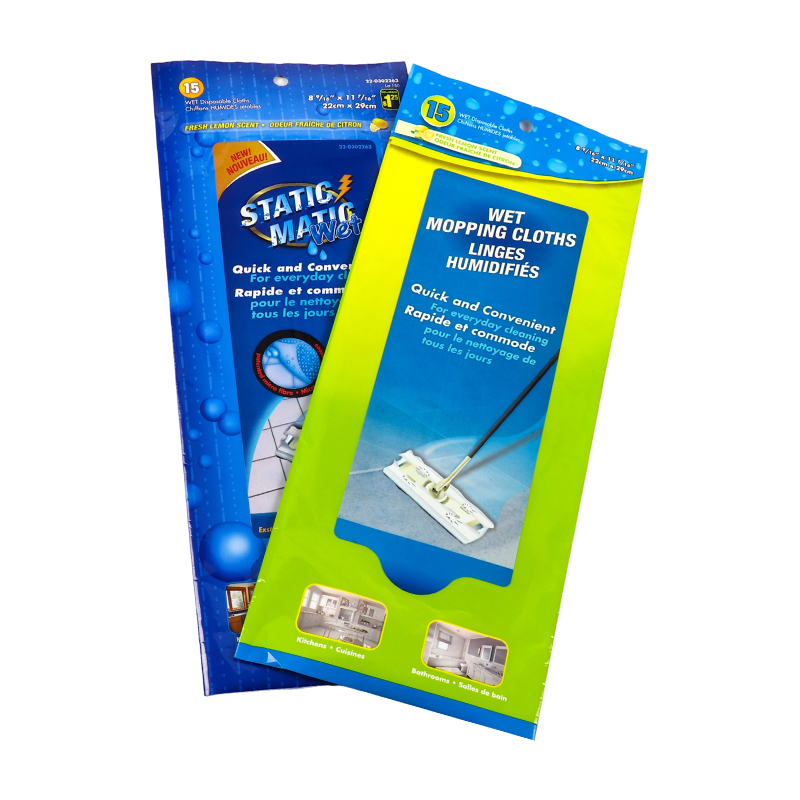2025-07-24
The wet wipes industry has experienced sustained growth worldwide, driven by heightened hygiene awareness, lifestyle changes, and increasing demand across healthcare, personal care, and household segments. As the market expands, so does the critical role of packaging—particularly composite packaging bags—in ensuring product integrity, usability, and shelf appeal. Wet wipes composite packaging bags have emerged as a solution, combining multiple material layers to offer barrier protection, durability, and design flexibility.
Why Composite Packaging Matters for Wet Wipes
Wet wipes are unique products that require specialized packaging to maintain their moisture content and hygienic quality. Since wipes are pre-moistened with liquids ranging from water-based solutions to alcohol or antimicrobial agents, the packaging must prevent evaporation, contamination, and degradation.
Composite packaging bags excel in this regard by using a laminate of various materials, each tailored to perform specific functions such as moisture retention, puncture resistance, and visual appeal. This multilayer approach addresses the challenges faced by simpler packaging options, such as plastic-only films, which often fail to provide adequate protection against oxygen and external contaminants.
Structure and Functionality of Composite Packaging Bags
The hallmark of wet wipes composite packaging is its multilayer composition. Typically, these bags consist of three or more layers bonded together, including:
Outer Layer: Usually made of polyester (PET) or polypropylene (PP), this layer offers mechanical strength and a high-quality printing surface. It protects the packaging during shipping and handling while providing space for branding and regulatory information.
Barrier Layer: Positioned in the middle, this layer is often composed of materials like aluminum foil, metallized films, or ethylene vinyl alcohol (EVOH). Its primary role is to block moisture, oxygen, and odors, effectively preserving the wipes’ freshness and efficacy.
Sealant Layer: The innerlayer is typically polyethylene (PE) or similar heat-sealable material. It ensures a tight, leak-proof seal, critical for preventing moisture loss and contamination.

This combination allows composite packaging bags to maintain the environment inside the package, extending product shelf life and improving customer satisfaction.
Leak-Proof and Moisture Retention Capabilities
One of the important features of composite packaging bags is their leak-proof design. The sealant layer, combined with precise heat-sealing technologies, creates airtight closures that prevent liquid seepage and moisture escape. This capability not only protects the wipes but also ensures the packaging remains clean and manageable for consumers.
The moisture retention properties enabled by the barrier layer are equally vital. Without a strong moisture barrier, wet wipes can dry out quickly, losing their effectiveness. Composite packaging bags’ ability to control moisture transmission rates makes them ideal for a variety of wet wipe formulations, including sensitive skincare and disinfectant wipes.
Durability and Consumer Convenience
Composite packaging bags are engineered to withstand physical stresses during transportation and everyday handling. The outer protective layers provide tear resistance and puncture protection, which help prevent damage and waste.
Beyond protection, these bags often incorporate consumer-friendly features such as resealable closures, easy-tear notches, or peelable lids, making the wipes easy to access while maintaining freshness after multiple uses. Some bags also feature clear windows or custom shapes to improve product visibility and shelf appeal.
Sustainability Challenges and Innovations
Environmental sustainability is a growing priority in the packaging industry, and composite bags are no exception. While multilayer composites provide performance, their complex construction can complicate recycling efforts. This has prompted manufacturers to explore innovative solutions such as:
Mono-material Laminates: Using a single polymer type that retains barrier properties but simplifies recycling.
Recyclable Barrier Films: Developing new barrier materials that can be processed by existing recycling streams.
Biodegradable and Compostable Films: Integrating materials that break down under industrial composting conditions without compromising functionality.
Companies are also investing in life cycle assessments and eco-design principles to minimize environmental impact while maintaining product quality.